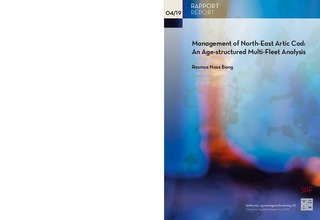| dc.contributor.author | Bang, Rasmus Noss | |
| dc.date.accessioned | 2020-02-05T09:32:28Z | |
| dc.date.available | 2020-02-05T09:32:28Z | |
| dc.date.issued | 2019-10 | |
| dc.identifier.isbn | 978-82-491-1001-8 (printed version) | |
| dc.identifier.isbn | 978-82-491-1002-5 (online version) | |
| dc.identifier.issn | 0803-4036 | |
| dc.identifier.uri | http://hdl.handle.net/11250/2639726 | |
| dc.description.abstract | The North-East Arctic cod fishery is of economic and cultural importance. The stock is subject
to joint management by Norway and Russia. Today’s stock management strategy is designed
to achieve the maximum sustainable yield given the current selection pattern. The current
selection pattern is largely determined by the fleet-composition, i.e. the distribution of the total
allowable catch in terms of shares. By use of an age-structured, multi-fleet, bioeconomic model,
it is shown that the stock has biological potential that cannot be realized with today’s
management. The same goes for the economic potential of the Norwegian part of the fishery.
Biological gains in terms of an increase in the sustainable yield may be achieved by altering the
overall selection pattern through changes in the fleet-composition. Economic gains in terms of
an increase in the net present value of the Norwegian part of the fishery may be achieved by
changing the fleet-composition and reducing the overall fishing pressure. | nb_NO |
| dc.language.iso | eng | nb_NO |
| dc.publisher | SNF | nb_NO |
| dc.title | Management of North-East arctic cod : an age-structured, multi-fleet analysis | nb_NO |
| dc.type | Report | nb_NO |
